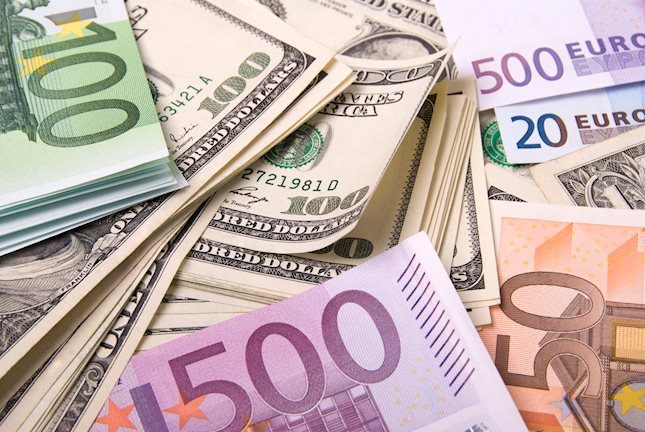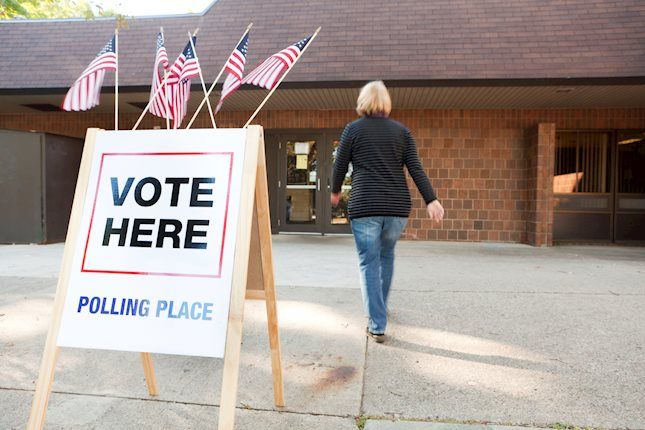In focus this week
Today, in the euro area, we receive the Sentix investor confidence indicator, providing the first assessment of sentiment in November. Focus is also on the final manufacturing PMI data for October.
On Tuesday, the US election takes place and is the major highlight of the week. Donald Trump is the small favourite to win the presidential election according to prediction markets, Republicans are expected to win majority in the Senate elections and House elections remain highly uncertain.
On Wednesday morning, when we - hopefully - know the results of the US election, we will be hosting two conference calls where we present our instant view on the results and implications for markets and the economy: Conference call on the implications of the US election for Global and Scandi markets at 8:40 - 9:10 CET and US elections morning call - Macro need-to-knows at 9:15 - 9:30 CET.
Economic and market news
What happened overnight
In oil markets, oil prices gained more than 1 USD following the announcement made by OPEC+ to delay December output increases until January next year. Recently, the price of oil has been pressured by decreasing demand in China, rising external supply and the outlook of the conflict in the Middle East improving.
What happened over the weekend
In the US, nonfarm payrolls growth practically halted according to October Jobs Report released Friday morning. NFP grew by only 12k (cons: 113k, prior: 254k). US government bond yields and EUR/USD shifted higher, but rather modestly compared to the seemingly large negative surprise. Most other labour market indicators for October have still painted a rather positive picture, so perhaps it is a good idea to not give this single (potentially distorted) reading too much weight.
On the wage side, average hourly earnings increased by a solid 0.4% m/m SA, which means that wage sum growth continued despite the weak employment reading. The household measure of employment showed an outright decline in employment (-368k) but as the labour force also shrunk by 220k, unemployment rate remained steady at 4.1%.
Finally, the ISM manufacturing index painted a mixed picture, with weaker business activity of 46.5 (cons: 47.6%, prior: 47.2%), but stronger new orders, employment and prices paid.
In Sweden, PMI for the manufacturing sector surprised to the upside with 53.1 (prior: 51.3). The surprise contradicts the weak NIER survey of last week and is off the table as an argument for the Riksbank to make a 50bp cut on Thursday.
In Norway, the NSA unemployment rate for October dropped to 1.9% (cons: 2.1%, prior: 2.0%) beating market expectations and tightening an already tight labour market. Additionally, the number of new vacancies dropped following relatively weak growth for more than a year.
In Switzerland, inflation for October surprised sharply to the downside with headline at 0.6% y/y (cons: 0.8%, prior: 0.8%) and core at 0.8% y/y (cons: 1.0%, prior: 1.0%). Prior to the release markets were pricing a 37bp cut for the meeting on 12 December. On release, EUR/CHF jumped, driven by energy prices, hotels and the volatile component of international package holidays. While our base case is a 25bp cut in December and March, this increases the likelihood of a 50bp cut in December quite significantly.
Equities. Global equities were higher on Friday, yet still lower over the past week. As mentioned several times last week, numerous factors are currently at play, making it challenging to distinguish the true drivers from mere noise. Nonetheless, last week and particularly Friday presented some very interesting results. Bond yields dropped sharply right after the low Non-Farm Payroll (NFP) print on Friday, only to grind higher throughout the session and closed the day higher. In the short term, the risk of a red sweep in the upcoming election seems more important for bond market than macroeconomic factors.
Last week's best-performing style was small-cap, despite higher yields. A red sweep would likely mean reduced regulation, or more precisely, diminished regulatory fears, which typically benefits small caps. Additionally, this season's earnings from small caps have not been impressive. Again, in the short term, it appears that elections have a more significant impact on small caps than yields.
Banks performed very well last, which makes sense given the strong earnings and higher yields. However, for us, banks are one of the biggest beneficiaries of a red sweep. More fiscal spending, increased lending activity, higher yields, and less regulation are all advantages. Policies on immigration and trade will have very little effect on banks. Therefore, based on both fundamentals and politics, it is logical to see banks performing exceptionally well recently.
US main equity indices on Friday were as follows: Dow +0.7%, S&P 500 +0.4%, Nasdaq +0.8%, Russell 2000 +0.6%. Asian markets were mostly higher this morning, with Japan closed.
FI: A sharp rally in global yields was recorded following the weaker-than-anticipated NFP on Friday with just 12k new jobs in October. However, as markets digested the timing of the poll coinciding with hurricanes as well as strong prices paid figure of the US ISM, markets quickly repriced higher in yields. 10y UST ended 10bp higher at 4.38%, in a bearish steepening move. German yields were broadly unchanged on the day. German ASW spread continued its tightening and now stands at just 5.8bp.
FX: EUR/USD rallied above 1.0900 after the NFP release. The distorted data did not have a lasting impact though and the cross closed Friday's session at day lows. Monday morning, one day before the US election, the cross is back at 1.09. Similarly, USD/JPY dropped briefly after the NFP, closed the week at day highs and is back below 152 this morning. Weak Swiss inflation numbers weighed on the CHF. The Scandies remain under pressure. EUR/NOK challenges two-months highs at 12.00 and EUR/SEK three-month highs at 11.65. Both crosses are sensitive to the US election outcome and the latter to the Riksbank decision on Thursday as well.
This publication has been prepared by Danske Bank for information purposes only. It is not an offer or solicitation of any offer to purchase or sell any financial instrument. Whilst reasonable care has been taken to ensure that its contents are not untrue or misleading, no representation is made as to its accuracy or completeness and no liability is accepted for any loss arising from reliance on it. Danske Bank, its affiliates or staff, may perform services for, solicit business from, hold long or short positions in, or otherwise be interested in the investments (including derivatives), of any issuer mentioned herein. Danske Bank's research analysts are not permitted to invest in securities under coverage in their research sector.
This publication is not intended for private customers in the UK or any person in the US. Danske Bank A/S is regulated by the FSA for the conduct of designated investment business in the UK and is a member of the London Stock Exchange.
Copyright () Danske Bank A/S. All rights reserved. This publication is protected by copyright and may not be reproduced in whole or in part without permission.
Recommended Content
Editors’ Picks

AUD/USD looks at the RBA for near-term direction
AUD/USD resumed its rebound and briefly surpassed the 0.6600 barrier on the back of the renewed and marked resurgence of the downward bias in the US Dollar. Investors, in the meantime, expect the RBA to keep its rates unchanged on Tuesday.

EUR/USD: Price action hinges on the US election and the Fed
EUR/USD managed to trespass the key 1.0900 hurdle and print new highs following the Greenback’s offered stance as investors warmed up for the US election and the FOMC event later in the week.

Gold trades around $2,730
Gold price is on the defensive below $2,750 in European trading on Monday, erasing the early gains. The downside, however, appears elusive amid the US presidential election risks and the ongoing Middle East geopolitical tensions.

Ethereum Price Forecast: ETH struggles below $2,500 amid State of Michigan pension fund investment in ETH ETF
Ethereum (ETH) is trading near $2,420, down about 1% on Monday, but could bounce off a key descending trendline close to the $2,258 historically high demand zone.

US presidential election outcome: What could it mean for the US Dollar? Premium
The US Dollar has regained lost momentum against its six major rivals at the beginning of the final quarter of 2024, as tensions mount ahead of the highly anticipated United States Presidential election due on November 5.

Best Forex Brokers with Low Spreads
VERIFIED Low spreads are crucial for reducing trading costs. Explore top Forex brokers offering competitive spreads and high leverage. Compare options for EUR/USD, GBP/USD, USD/JPY, and Gold.